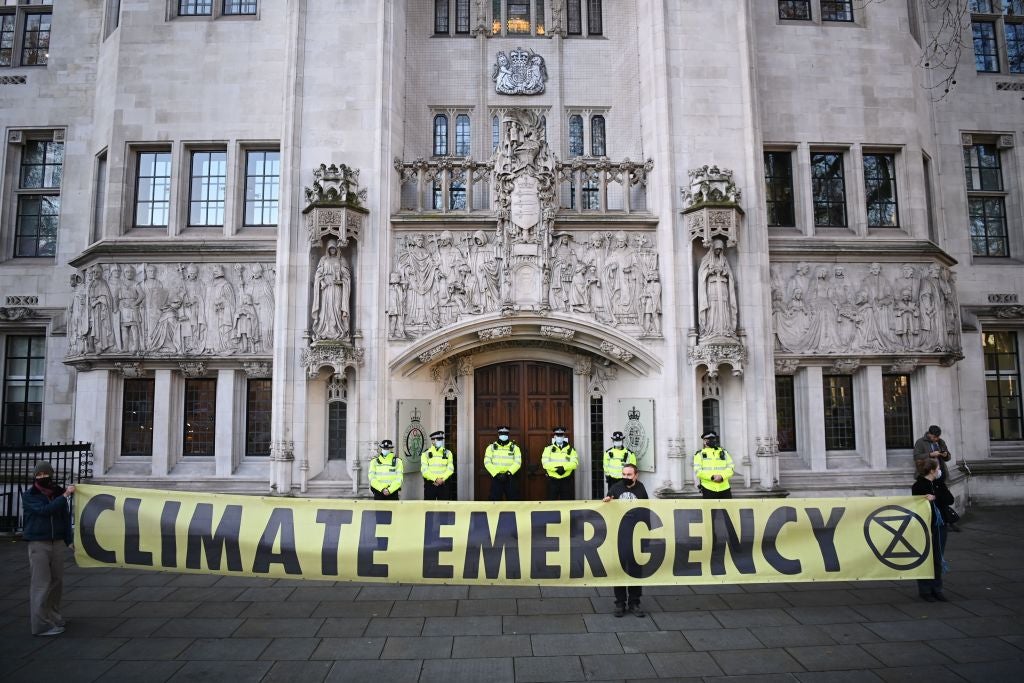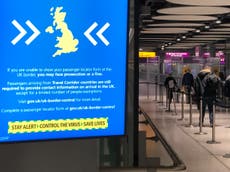I am the lawyer who committed contempt of court over Heathrow’s expansion plans – this is why I did it
The court’s ruling is a treasonous betrayal of this country’s young people


Your support helps us to tell the story
From reproductive rights to climate change to Big Tech, The Independent is on the ground when the story is developing. Whether it's investigating the financials of Elon Musk's pro-Trump PAC or producing our latest documentary, 'The A Word', which shines a light on the American women fighting for reproductive rights, we know how important it is to parse out the facts from the messaging.
At such a critical moment in US history, we need reporters on the ground. Your donation allows us to keep sending journalists to speak to both sides of the story.
The Independent is trusted by Americans across the entire political spectrum. And unlike many other quality news outlets, we choose not to lock Americans out of our reporting and analysis with paywalls. We believe quality journalism should be available to everyone, paid for by those who can afford it.
Your support makes all the difference.On Tuesday, early afternoon, after a strong cup of tea, I pressed “send” on a tweet which made headline news: the UK Supreme Court would the next day rule in favour of Heathrow airport, clearing one of the remaining obstacles to a third runway.
In doing so I was breaching an order of the highest court in the land, risking prosecution for contempt of court, a prison sentence, and being struck-off as a barrister (I am resigned to the latter). Yesterday, the Supreme Court reported my actions to Suella Braverman, the attorney general.
Why would I do that? Why would I risk so much to publish a court decision, which would in any event be published the following day? I have been a lawyer for 25 years. You win some; you lose some. You don’t throw your toys out because you don’t like the verdict.
It was not that I disagreed with the Supreme Court’s judgment. It is that, in my opinion, the court’s ruling is a cover-up, which conceals that Chris Grayling, the former transport minister, relied on a dangerous and discredited climate target in order to give Heathrow expansion the green light.
In December 2015, the UK government and 194 others signed the Paris Agreement. They agreed that the historic limit of 2C warming risked irreversible damage to people and planet. As the Intergovernmental Panel on Climate Change (IPCC) has made clear, the consequences of crossing 1.5C warming are dire. As a result, governments committed to the Paris temperature limit – “well below” 2C, while aiming for 1.5C. The Paris temperature limit is our lifeline. Beyond it only fools would tread.
Chris Grayling chose not to assess Heathrow expansion against the Paris limit. He used the discredited, dangerous 2C limit instead. Only he didn’t let anyone know. He told the public and parliament that a third runway would be consistent with the UK’s “international obligations” on climate change. People assumed he meant current obligations. It was only through the disclosure process in court that it came to light he had used the historic, dangerous 2C limit.
According to the government’s evidence, the Paris Agreement means carbon dioxide emissions from aviation need to be zero by 2050 (and many would say much sooner). Heathrow expansion, however, means 40 million tons of carbon dioxide emissions from UK aviation by 2050. Those figures cannot be reconciled. It was only by using the dangerous 2C target that Grayling could give the third runway the green light.
Grayling’s legal team conceded he had used the 2C temperature limit and that he had not taken the Paris Agreement into account because it was “not relevant”. Plan B’s case was simple. Grayling was wrong to use the dangerous 2C limit as his benchmark. He should have used the Paris limit instead. The Court of Appeal agreed with us. The government accepted the verdict and chose not to appeal.
But Heathrow Airport Limited, the company which plans to make vast profits from expansion, launched an appeal to the Supreme Court, supported by an army of lawyers. The hearing took place in early October.
On Thursday 10 December we received the draft judgment, shared only with the parties to the litigation (for crossing i’s and dotting t’s). There was a strict embargo on further disclosure. I read it in disbelief. The court had wiped from the record Grayling’s reliance on the 2C target (as if it hadn’t happened). It ruled Grayling had taken the Paris Agreement into account, even though Grayling had admitted that he had not done so, and that he had used the 2C target.
I wrote to the court to say the draft judgement, if uncorrected, would conceal from the public that vital fact that the third runway had been approved on the basis of a dangerous target. I would make a public statement if they failed to put that right. Otherwise I felt I would be complicit in the cover-up. I asked the Supreme Court for leave to talk to a lawyer to discuss the implications of the Supreme Court’s ruling during the embargo period, knowing that there was a short time window to take action. It refused. But it could not put it right. If it acknowledged that Grayling had relied on the wrong temperature limit, it would have to reverse the decision. It added two short references to 2C, ruling the issue was “irrelevant”.
The pandemic has reminded us of our subjection to natural laws. The Paris temperature limit is all that divides us from a future of crisis upon crisis that is grim beyond words. The court’s ruling, which legitimises the Grayling approach to climate targets, is a treasonous betrayal of this country’s young people. It makes a mockery of the government’s claims to climate leadership in the year of the UK’s presidency of the UN climate process.
The Supreme Court’s judgment is not just devoid of merit; it is deadly. That is why I have risked prison by committing contempt of court. To expose it for what it is.



Join our commenting forum
Join thought-provoking conversations, follow other Independent readers and see their replies
Comments